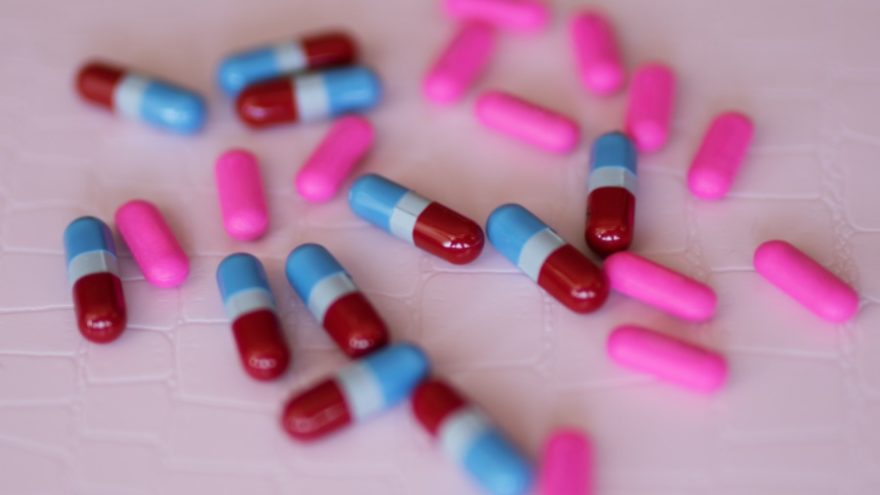How to Get your Children to Take their Medicine

Most kids don’t have problems taking their medicines unless maybe if they are still infants. They seem to squirm more and the bitter taste is not something they like so they may fight you more so than an older child or a toddler. Whatever the case may be, there are ways you can help your child take their medicine so it doesn’t seem like you are going through a wrestling match. If your child is young and still an infant and needs a nebulizer treatment, this might be a bit more tricky. Young infants use small masks for nebulizers if they have a bad cold or are having problems breathing. It might take two of you to help your infant with the nebulizer and making sure the infant gets all the medication into their lungs. This isn’t too difficult, just try to keep your baby’s hands away from the mask and the treatment takes about five minutes.
It’s important to be in a good mood when your child is sick and show them a lot of care and love. Tell your child it’s time for their medicine and be positive about it so they don’t feel like there is anything to be worried about. Some parents don’t let their baby see the medicine and play a game with them and then put a syringe in their mouth if the medicine is liquid based. The baby ends up swallowing the medicine and not even realizing it.
Different flavors to disguise the bad taste
Children do not like the taste of anything bitter. Parents know this and decide to use syringes or droppers instead of a cup. The best way to handle bitter medication is to put the syringe close to the inside of their cheek and try to keep the medicine away from the tongue. Try to slowly push the medicine through the dropper or syringe. Another idea is to put the dropper a bit back on the tongue and let the child suck on the end of the dropper.
Some medications have flavors that are added to them which can be easier on the parent. Some drugstores do this for free and have a variety of different flavors to disguise the taste. If your child is old enough to talk he or she can pick out their own flavor to put into their antibiotics. Most antibiotics for kids that are liquid have a cherry flavored taste to the medicine anyways.
You can also give your toddler a little control and let him or her choose how they want to take their medication. They can choose the syringe, dropper or cup and this gives the child some power over the choice of taking their medication. This is a good way to prevent them from fighting with you because your child made the decision. You can also give your child the option of when they are going to take their medication. They might want to take it after dinner or before bedtime.
Some parents have tried giving their child some ice to suck on before giving them their medication. Ice numbs the taste buds and helps the medicine go down the throat easier. Ice chips is a good idea to use because kids can’t choke on small pieces of ice like they can on a larger cube. You could choose to put the medication in the refrigerator or try an ice pop too. Steroids are bitter and taste better cold and also steroids can wind your child up. If possible try to ask your doctor for an alternative to steroid medication if possible. In some cases, steroids are important for children with lung problems but the long term effects could be dangerous so read up on steroids before you choose this type of medication for your child.
Eye drops are a bit more difficult because your child definitely will start pushing you away. It’s a good idea to warm the bottle for a few minutes in your hands to body temp. Warm eye drops feel much better on a child than cold ones. Lay your child down and shoot for the inside corner of the eye and after the child opens their eye, some of the drops might run down their cheek. This situation might need two adults to hold your child down.
![]() Kids have great imaginations and you can always buy them a reasonably priced doctor’s kit so they may play doctor. The kit comes with the regular medical instruments doctors use to examine a patient. This usually includes an eye dropper. Your child probably has a favorite stuffed animal or doll and have your child give their pal the medicine before they take their medicine. This is a great way for kids to get comfortable taking their medicine.
Kids have great imaginations and you can always buy them a reasonably priced doctor’s kit so they may play doctor. The kit comes with the regular medical instruments doctors use to examine a patient. This usually includes an eye dropper. Your child probably has a favorite stuffed animal or doll and have your child give their pal the medicine before they take their medicine. This is a great way for kids to get comfortable taking their medicine.
Pharmacists are good at explaining medication because they are the ones that fill the prescriptions. This is their job and they can answer any question or concern you have about the medication. Make sure you see what the medication is before you leave the drug store. Are they pills, capsules, or liquids or drops? Read the labels on the prescription bottles and ask your doctor or pharmacist any questions you have before giving the child the medicine. Pharmacists are always available to answer any question and if your child breaks out into a rash then call the doctor.
There are different tools for dosing and some are special spoons, droppers, syringes, small dosage cups and pertains to the type of medication and the age of the child. Ask your pharmacist how the medication should be given with the dosing tool if you are unsure. Sometimes the syringe is used to measure the medication into the cup and then the cup is used for the child to drink the medication.
Almost everyone has old prescriptions laying around the house that are put away in childproof containers and in safe areas. It’s important to dispose of any medications that you are not using or have expired. Throw away anything old or take them to the pharmacy that dispensed the prescription. It is not safe to throw any medication in the garbage or down the sink or toilet. This gets into the water system of your community and could contaminate the water.






